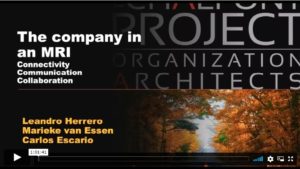 New organizations, and old ones in the business of transforming themselves, would be better off learning by heart these two words: aggregation – disaggregation.
New organizations, and old ones in the business of transforming themselves, would be better off learning by heart these two words: aggregation – disaggregation.
This is the ability to create ‘transitional’ or ‘time-limited’ (dare I say even ephemeral) fit for purpose structures that aggregate people for a purpose and disaggregate as soon as a mission has been accomplished.
I am talking here about normalising
aggregation-disaggregation as a form of transitional (proper) structure
The concept is not new. Some organizations have used Tiger Teams and SWAT teams for a long time but it has mostly been a bit of an anomaly, and most of the time with an heroic-crisis-fixing goal and ethos.
I am talking here about normalising aggregation-disaggregation as a form of transitional (proper) structure that brings brains and hearts for a reason, in a non-permanent basis. Most new structures that we create have a permanent mission (or at least not the prospect of a relatively early disbandment). Organizational chart management (and reshuffling) is done mostly on hierarchical/reporting grounds.
Business organizations should look at the ‘movie studios’ model with different
professions aggregated and coming together for a while
Entire corporate functions, for example could host those temporary aggregations (effectively people in relatively short secondments) which could attract best brains and hearts that do not need to permanently ‘move house’. In particular people from the business side in operational functions. The difference with a Task Force is that these tend to become very bureaucratic and committee -style, whilst these aggregations are ‘for real and full time’ for the time frame decided.
Business organizations should look at the ‘movie studios’ model with different professions aggregated and coming together for a while, disaggregating as soon as an outcome is in place. It’s normal, nobody thinks the sky is falling, and you are called to arms if you are good. By the way, the director is not fully in charge and the output is frequently not his or hers, but the editor’s. That is why there is something called ‘the director’s cut’ version, or the one they would have wanted. The producer has the money and has called the director but does not direct. The casting people bring the bodies but not the location, and the location people do the opposite. Composers work in parallel but don’t direct or edit. Script writers usually work as a mini group and produce the script that some directors, or indeed actors, often bypass. The actors act but only in their bits, they don’t sit around waiting. And special effects play with screens. And they produce a multi-million pound output.
Just imagine for a second this application in our traditional, permanent, stable, organization-chart-driven companies. As many good disruptive ideas, the cost is anything from zero to minimal and the learning potentially huge.
_____________________________________________

Can we put the company into an MRI?
Join us as we talk about 3CXcan, a product which will provide you with a full understanding of your organization’s formal and informal connections, communication channels and internal collaboration, an in-depth analysis, which is based on the highest scientific principles of network sciences. This webinar will show real examples of 3CXcan diagnosis’ performed in real companies.
Understanding the real organization, which may or may not be the one you assume it is, will show a completely new baseline upon which to navigate the future.